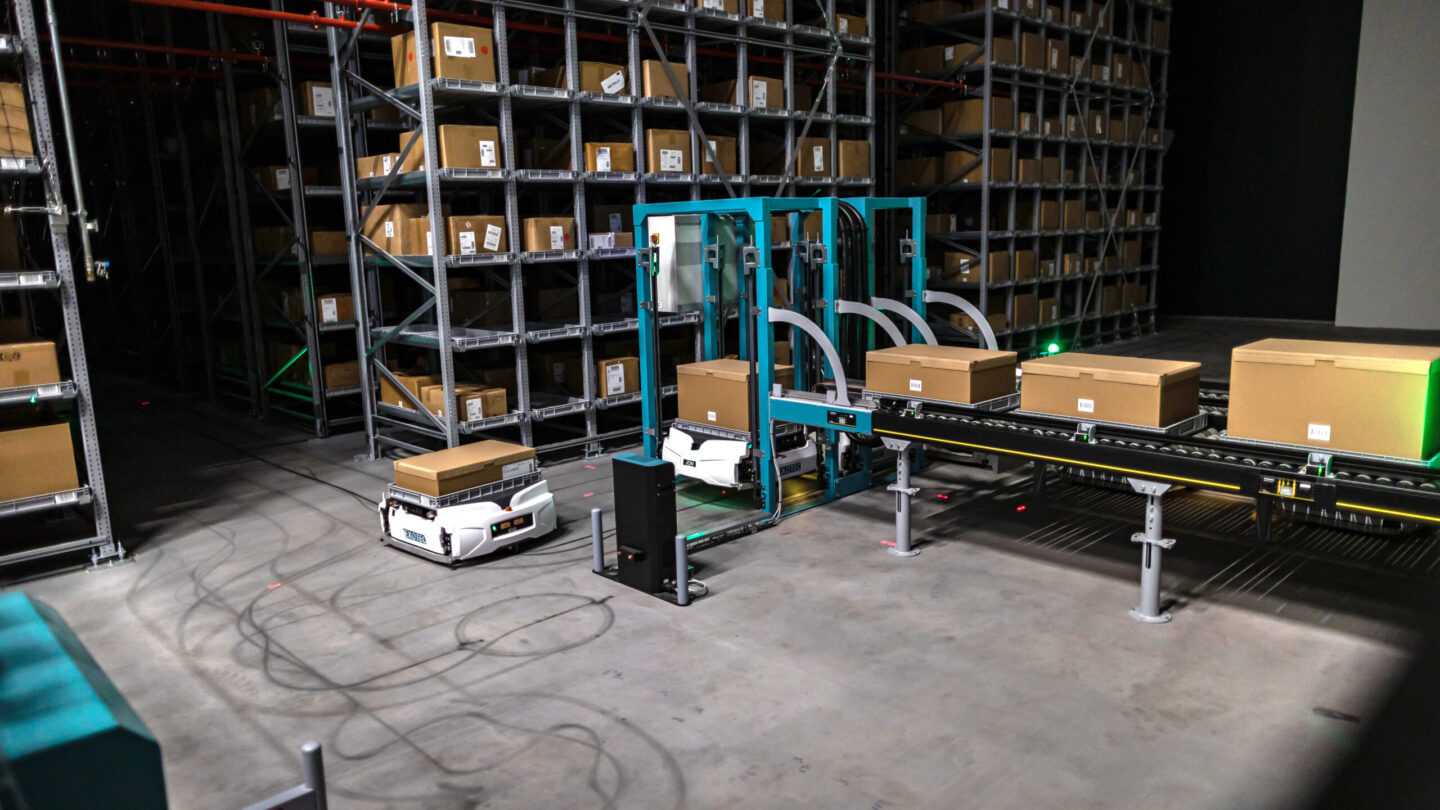Case picking is an integral process within warehouse operations, optimizing the process of handling large orders, typically for store replenishment and wholesale distribution. It involves handling cases containing multiple items, usually of the same SKU, for shipment. Technological advancements have greatly enhanced case picking as warehouse operations evolve, leading to increased efficiency and flexibility.
What is Case Picking Used For?
Case picking is best suited for handling bulk orders that require some customization but not enough to warrant piece picking (picking individual items). This method is ideal when items are pre-packaged in case quantities aligned with order needs. This method is ideal for operations requiring rapid delivery, especially when individual item selection or sorting isn’t required.
Benefits of Case Picking
Implementing effective case-picking strategies significantly boosts warehouse operations in various ways:
- Enhanced Efficiency: Simplifies the shipping process by reducing handling steps, especially when shipping entire cases instead of individual pieces.
- Improved Order Accuracy: Lower potential for errors as picking entire cases involves fewer transactions compared to piece picking.
- Optimized Space Utilization: Requires less space than storing individual items, which may need additional shelving, whereas pallets consume more floor space.
- Reduced Manual Labor Costs: Eliminates the need to pick individual items, saving time and reducing labor costs.
- Increased Safety: Minimizes the use of heavy equipment like forklifts required for moving full pallets, enhancing safety within the warehouse environment.

Explore the Skypod system’s ability to efficiently manage both case picking and piece picking within a single revolutionary robotics system.
Strategies for Improved Case Picking
Utilize Technology: Leveraging technology significantly enhances case-picking efficiency. For instance, pick-to-light and put-to-light systems provide visual cues, guiding workers quickly and accurately to the cases that need to be picked or placed. This technology minimizes errors and streamlines the picking process, facilitating faster fulfillment times.
Inventory Management Techniques: Adopting a dynamic approach to inventory management can greatly support case-picking efficiency. Consider techniques such as ABC analysis, which involves categorizing inventory items into three groups based on their importance and value. By categorizing inventory items in this way, businesses can prioritize their focus and resources more effectively. A items contribute significantly to revenue or are critical for operations and require close monitoring and tighter control to ensure availability and minimize stockouts, while C items can be managed with less attention and lower costs. This technique helps optimize inventory levels, improve cash flow, and enhance operational efficiency.
Data Precision: While incorporating automation into your warehouse operations, it is important to ensure the precision of the data provided to the automation provider. This is paramount for optimizing performance. While the provider programs the software to optimize tasks like picking routes and schedules, the accuracy of this input data is critical. Misalignment between the provided data and actual warehouse conditions can lead to inefficiencies. Ensuring that the data you supply reflects your actual operations is essential for success.
Case-Picking Methods
Manual Case Picking: Manual case picking is a hands-on process where warehouse staff physically collect cases from shelves, racks, or pallets, often using carts or forklifts for assistance. After retrieval, workers consolidate these cases onto pallets or carts for further processing or direct shipping. The final step involves preparing the picked cases for dispatch, which includes labeling and wrapping the cases, ensuring they’re ready for loading onto delivery trucks.
Manual case picking poses several challenges for warehouse operations. Firstly, it is labor-intensive, relying on physical exertion from workers to retrieve cases, leading to fatigue and potential injuries. Secondly, there’s a risk of errors, as manual handling increases the likelihood of picking the wrong items or quantities, leading to fulfillment inaccuracies and customer dissatisfaction. Additionally, manual case picking is less efficient than automated methods, resulting in slower order processing times and higher operational costs. Finally, scalability is limited, as manual processes struggle to keep pace with increasing order volumes, potentially causing bottlenecks and delays during peak periods.
Automated Case Picking: Manual case picking, while suitable for low-volume orders, faces growing challenges with rising demand, prompting the adoption of automated storage and retrieval systems like the Exotec® Skypod system. These systems utilize software-guided machinery or robotics to seamlessly transport inbound cases from replenishment stations to storage racks, while efficiently sending ordered cases to outbound areas for shipment. This minimizes dependency on manual labor and enhances both order accuracy and throughput rates.
Choosing the Right Automation Partner for Your Warehouse
Selecting the right automation partner is crucial for modern warehouse operations, especially for improving case picking efficiency. The Exotec Skypod system offers the optimal mix of performance and adaptability for case picking operations.
The system can boost throughput by up to five times compared to manual methods, ensuring that any case can be retrieved from storage within just two minutes. The modular system accommodates the widest range of throughput, storage, and industry needs, whether you’re expanding into e-commerce, adjusting SKU numbers, or transitioning from B2B to B2C fulfillment. Exotec provides solutions that meet your current requirements and adapt swiftly as your business evolves.
